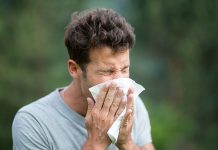
The number of deaths from COVID-19 is increasing, and so are the total cases. It’s normal to feel overwhelmed by all the bad news during this worldwide pandemic. However, researchers are working hard to understand, treat, and prevent the new coronavirus. Let’s look at some of their findings.
Globally, the total number of deaths from COVID-19 has already gone over 10,000, and there are more than 244,000 confirmed cases. These large numbers can make people feel anxious and worried.
It’s very important to take precautions and stay safe during this global pandemic. At the same time, it’s good to focus on some of the new research that could help with treatment and prevention in the future.
In this article, we’ll share some of this evidence, which has been reported by Medical News Today.
Researchers in Hong Kong studied how the outbreak affected 43 public hospitals. The results are promising: In the first six weeks of the outbreak, 413 healthcare workers dealt with 42 confirmed COVID-19 cases. Out of these workers, 11 were exposed to the virus without protection.
Thanks to strict infection control measures, none of the healthcare workers got the virus during this time, and there were no infections acquired in the hospitals.
Dr. Vincent C.C. Cheng from Queen Mary Hospital in Hong Kong and his team concluded that proper hospital infection control can prevent the spread of the virus among healthcare workers. Key practices include good hand hygiene, wearing surgical masks, and using protective gear when caring for patients.
In another study with four rhesus macaques (a type of monkey), scientists found that being infected with SARS-CoV-2, the virus that causes COVID-19, can protect against getting reinfected later. They reinfected two of the monkeys 28 days after the first infection, and tests showed that the virus was not found in them.
The researchers said, “Our results indicate that the first infection could protect against future exposures, which is important for vaccine development.”
Medical News Today also spoke with Professor Martin Bachmann from Oxford University about building immunity to COVID-19. He explained that if someone gets really sick from COVID-19, their body will likely create a strong antibody response. However, if the virus doesn’t make someone very sick, they might not build those antibodies.
Right now, a trial is testing a potential SARS-CoV-2 vaccine for the first time in humans. The National Institutes of Health (NIH) is funding this trial at the Kaiser Permanente Washington Health Research Institute in Seattle. In this trial, 45 healthy volunteers will receive a vaccine that has some genetic material from SARS-CoV-2. Because the vaccine does not contain the actual virus, the participants won’t get COVID-19.
Officials warn that it might take 12 to 18 months before the vaccine is available to the public. The main goal of this trial is to ensure there are no serious side effects.
Many other projects are also working on creating new vaccines. Our research editor, Yella Hewings-Martin, Ph.D., has gathered information about several potential vaccines and treatments for SARS-CoV-2.
One idea is to use an old method called “passive antibody therapy” to treat COVID-19. This method has been used since the 1930s and doesn’t require much new research. It involves taking blood from a person who has recovered from COVID-19 and using the part of the blood that contains antibodies to help another person who is infected.
Dr. Arturo Casadevall, a professor at Johns Hopkins University, explains that this is possible but needs organization and resources, as well as blood donations from recovered patients.
A new case study published in Nature Medicine talks about a 47-year-old woman who recovered from COVID-19 in just a few days after catching the virus in Wuhan, China. Researchers looked at her immune response to learn more about how she recovered.
Professor Katherine Kedzierska from the Doherty Institute in Melbourne found that the woman’s blood had increased levels of immunoglobulin G and immunoglobulin M, which are types of antibodies. They also found a high number of important immune cells about a week after her symptoms started.
“This is a big step forward in understanding how people recover from COVID-19. Our methods can be used to study immune responses in more patients and help define what is missing in those who have severe outcomes,” said Professor Kedzierska.








